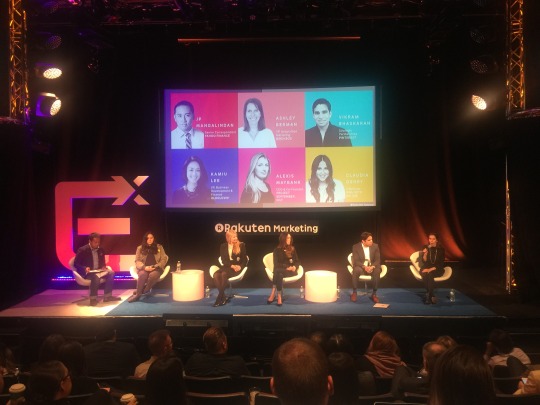By Klaudia Tirico, Features Editor

While influencer marketing is a relatively new phenomenon, it’s already demonstrating its worth. Birchbox, for example, credits its influencer marketing program for a whopping 258% increase in sales when it launched its color cosmetics brand. You can’t argue with these types of results.
No matter what vertical you’re in, an influencer marketing program can be the ticket to higher conversions and deeper engagement with customers.
Recently, I attended an event hosted by Rakuten Marketing that featured a panel about the evolution of influencer marketing. The panelists revealed five interesting tips and tactics for conducting successful influencer marketing programs that I wanted to share.
There are three types of influencers, which Vikram Bhaskaran, who leads Strategic Partnerships at Pinterest, highlighted during the panel. They are:
- Influencer as a point of distribution known for his/her access to an audience. This influencer promotes a company’s content through social media channels in order to reach new consumers.
- Influencer as a content creator, authoring native content that varies by the social media platform. This could include a series of videos on Snapchat, or images created by the influencer on his or her Instagram page.
- A new type of influencer created by Pinterest, basically someone with good taste who curates content from other sources on their page — specifically on Pinterest.
Looking to leverage an influencer to help promote your brand? Here are some best practices to get you started.
1. Aim To Build Long-Term Relationships
Aim to build a long-term relationship with an influencer. Don’t just hire someone to display a single ad on his or her social channel. Consider it as more of an ambassador program with a mix of top-tier or mega-influencers (with more than 100,000 in reach) with micro influencers (under 100,000 in reach). That’s the advice of Kamiu Lee, VP of Business Development & Finance at Bloglovin’, a company that specializes in influencer marketing.
Claudia Oshry, an influencer and founder of the blog “Girl With No Job,” was also on the panel, and emphasized that a long-term relationship is mutually beneficial. “Everyone wants a partnership to work,” she said. “I want to involve the brand that’s good to me over time, but I always try one campaign to experiment.”
2. Find That Natural Bond
It’s important for an influencer to be the right representation of your brand. “Too often, brands think of influencers as a quick hack for distribution, or they want to associate themselves with someone cool,” said Bhaskaran. “But the fundamental question is: Is this person an authentic representation of your brand?”
Panelist Ashley Berman, VP of Acquisition Marketing at Birchbox, said the women who are already familiar with Birchbox and have been through the experience are the best ambassadors because “they get it and we don’t have to educate them on the brand.”
Another panelist, Alexis Maybank, CEO and Co-Founder of Project September, emphasized the importance of a natural bond. “The more it can come from a place where you’ve seen the person talking about your brand before, the better,” she said. “People look at the influencer’s follower count, but it’s so much more than that. Influencers have deeper relationships with their followers than celebrities. Learn about their followers, ask about them.”
3. Understand Specific Content Requirements Of Social Platforms
Not all content works well on all social channels, so it’s crucial to differentiate the best qualities of each channel to better engage with consumers. According to Maybank, putting content in a lot of different places works well, but the way you talk about things is different on Instagram compared to Snapchat.
“Understand each platform and what content it requires,” said Oshry. “If it’s a great video campaign, try Facebook; good photo content does well on Instagram.”
4. Give The Influencer Creative Control
Remember, no one knows their followers better than the influencer. So taking control over every single detail will turn them into an advertising robot. “You’re working with influencers, not a display ad,” said Bloglovin’s Lee.
Oshry agreed. “When I first started, brands wouldn’t give me creative control,” she said. “No one knows how to cater to my readers better than I do. When a brand has one idea and is fixated on one concept, they don’t want to hear it. Keep the ways of specific communication open.”
5. Think Outside The Box
When searching for the right influencer, try to think outside of your vertical. “If you’re a food brand, don’t only think about working with food influencers,” said Lee. “There is a lot of value to branching beyond that. Think deeply about what who your end customer is and pick the right influencer for that — not just because they are in a specific box.“






